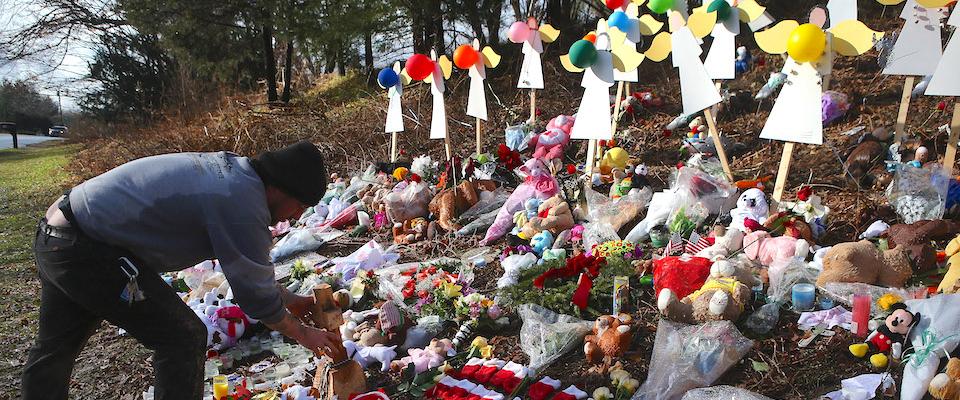The grim reports of mass shootings just keep coming—the Orlando massacre followed all-too-similar tragedies we’ve come to know as shorthand for senseless violence: San Bernardino. Umpqua. Sandy Hook. Aurora. Columbine. Ad nauseam.
So, too, does the inevitable debate about ways to prevent the next incident, from restricting easy gun access to overhauling our mental health system. But there’s also a less prominent emergent idea: a new emphasis on teaching our school children social and emotional skills.
“We already have the solution to this deep malaise and violence impacting America. We have scientific research and study after study to back it. We have the programs in place,” insists a frustrated Mark Collin, creator of Toolbox, one such social-and-emotional-learning program. “Now, all we have to do is realize that social and emotional learning is not just a nice add-on for our children’s education, but a crucial must-have if we want to prevent such atrocities. SEL is the missing piece in our education system and it is obviously a critical one at this point in time.”
Once a small subsection of education theory, SEL has been gaining support, partly in response to increasing school violence. After the Sandy Hook Elementary School shootings nearly three years ago, in which 20 children and 6 staff members at a Connecticut school were killed, the bereaved community formed Sandy Hook Promise. The aim: to protecting children from gun violence by supporting programs that create safer and healthier homes, schools and communities. Looking for partners, they turned to Toolbox.
An Introduction to TOOLBOX™ – 6:44 from Toolbox by Dovetail Learning on Vimeo.
“I felt honored when they called because these are parents who had lost their children to violence and so I know how completely invested they are in finding a solution. This is very personal for them,” Collin says. “They are stepping back and asking, ‘Where is this violence stemming from? How can we intervene and change it? What are we teaching our children?’ ”
In recent years schools have been hyper-focused on academic assessment—and the result, some critics say, is too little emphasis on other needed skills, such as understanding and managing emotions, feeling and showing empathy for others, establishing and maintaining positive relationships, and making responsible decisions.
“Reading, writing and arithmetic are very important,” says Collin. “But, it’s become increasingly obvious that we can’t ignore the needs of the whole child. Plus, when these needs are met, and the classroom is calm, and kids are getting along and working together, then they are better able to concentrate and learn all that reading and writing and arithmetic.”
That increase in academic learning is not a small one, agrees Valerie Shapiro, assistant professor at UC Berkeley’s School of Social Welfare, who is currently conducting research on the Toolbox program. She notes that when researchers looked across 213 studies of SEL, they concluded that when children are exposed to well-implemented SEL interventions, standardized achievement test scores are higher by an average of 11 percentile points relative to those not exposed to an SEL program.

Of course it’s not that simple. The “well implemented” is key. Shapiro’s current research, funded by the Stuart Foundation, focuses on different methods of implementing the Toolbox program, which is now used in 40 school districts including those in Boston, Montreal and Oakland. “I work with many different programs and so I know there are a lot of really good, really effective, SEL programs out there,” she says. But “there is a well-documented chasm between what researchers know is effective and what happens in routine practice. Sometimes this is because programs are time consuming, complicated, or don’t resonate well with the people asked to implement them.”
Shapiro became involved after the Berkeley Unified School District held a parent workshop about its Toolbox program one evening, and she went along with a friend to see what it was about. “What I experienced at that parent workshop felt very unique,” she said. “There was so much enthusiasm for Toolbox. Teachers and parents really resonated with it. I wondered, ‘Was there something about Toolbox that would overcome obstacles to high-quality implementation?’ That sparked my interest.”
SEL proponents ask: Why not take our expanding knowledge of how the human mind works and use it to teach our children how to be self-aware, know their own nature, and then learn how to best navigate their environment?
For example, we know that, in the brain, the amygdala is the trigger point of emotions and arousal, while the prefrontal cortex is involved with higher-order thinking, such as reasoning, inhibition and decision-making. When there’s a stressor, the amygdala “hijacks” the brain and we fall into a fight-or-flight response. The prefrontal cortex is not in control, so there is no reasoning at this point, and this is where people “lose their temper” and simply react.
UC Berkeley professor Dacher Keltner draws on research in psychology, sociology, and neuroscience to make the case that we are “wired” to be good, down to the neurochemical level. But can it be that simple?
For anger management, the trick is to learn the signs of when this is happening and have a technique at the ready to stave off aggressive behavior while in this state, while also kick starting the prefrontal cortex back into action. The old trick of counting to 10 does help. Even more effective is taking deep, conscious breaths and being mindful, focusing on the physical sensations.
In his book Born to Be Good: The Science of a Meaningful Life, UC Berkeley professor Dacher Keltner draws on research in psychology, sociology, and neuroscience to make the case that we are “wired” to be good, down to the neurochemical level. Studies show that when people behave in pro-social ways, such as sharing resources, they get some activation in the reward circuit of their brains. It feels good to be good; it’s its own reward.
In related research, 20-month-olds who were offered a reward for helping behavior were less likely to help again than those who didn’t receive a reward. The feeling associated with getting the extrinsic award, it seems, wasn’t as strong as the feeling associated with the intrinsic reward, and so the behavior wasn’t as likely to be repeated.
The thinking is that when children are taught about emotions such as empathy and sharing through SEL programs, and encouraged to practice those thoughts and behaviors, they end up getting that good feeling we’re wired to get. The goal: Everyone in the class wants to repeat these pro-social behaviors, so these become the fallback position, transforming the classroom into a caring environment.
Although this sounds wonderful, there’s also a great deal of scientific research supporting the theory that we have that selfish gene and we’re all pretty much looking out for Number 1. Case in point: A study by the business schools of Stanford, Northwestern, and Carnegie Mellon University found that individuals who act in their own self-interest are more likely to gain dominance and be recognized as leaders than the altruistic.
“I have no doubt that if children are exposed to social-emotional learning early enough, for long enough, they will learn to align their actions with that part in themselves that knows what is right,” Collin maintains. “Children know what’s right. It’s not anything you need to teach them. It’s just something that you need to help them access, by teaching them how to use the right tools. Once they know how to do that, and it’s habit, there’s no going back.”
But what about people who are simply born without empathy? “All I can tell you is what I know,” Collin said. “And of all the years I’ve spent doing this, and of all the children I’ve worked with, there has not been one—not one—that I couldn’t connect with. I don’t think it exists. I believe every child is reachable. We just need to reach them.”
Most SEL programs are designed at universities or think tanks—the teachers and students get involved later. Collin did it the other way around.
After receiving his master’s in transpersonal psychology from Sofia University in Palo Alto, he went to live alone in the Mendocino County woods, saying that in order to hear his calling he needed to “listen to the silence.” He brought along his trusty toolbox, a gift from his mentor, built himself a home, and stayed for four years.
“One day, I was watching a pileated woodpecker feed her four young offspring and looking at the wind move through the trees,” he recalls, adding that he felt so present and in the moment, that he had no sense of the hours that passed by. Deciding that nature and solitude had taught him what he needed to know about being mindful and present, he left the woods, married, had two children, and worked as a custom-home builder. But when he was offered a temporary counselor job at a school in a small, former logging town in Sonoma County, he accepted, saying he wanted to give back to society. The three-month gig turned into eight years, and the foundation of Toolbox.
“The teacher would tell the class to calm down, but you’d see these kids’ big eyes and you could tell they had no idea how to do that, what to do. How do you calm down?”
“A lot of the kids came from troubled homes,” he recalled. “There was some abuse, there was quite a lot of addiction. There was dysfunction in the school itself. And the classrooms … the classrooms were chaotic. The kids were barely listening let alone learning. The teacher would tell the class to calm down, but you’d see these kids’ big eyes and you could tell they had no idea how to do that, what to do. How do you calm down?”
So Collin tried something new. He had studied and knew about resilience, mindfulness, conflict resolution, and deep, conscious breathing. So, he taught the kids how to take a deep breath, how to feel it inflating inside like a balloon, how to focus and center. They liked it. He worked along with the kids to develop the right wording to get them focused on their breath, and they gave him their feedback and insights until he got it just right. From then on, when the class became chaotic again, Collin and the children had a useful “calming” tool.
He wanted to make that idea concrete for the kids. So he borrowed a tape measure from the janitor and photocopied it. On the other side he wrote “Breathing Tool.” Then he put them into “toolboxes” he crafted from manila folders and gave them to the children. As needed, he would remind the children to use their Breathing Tools. Soon, he says, the kids were able to calm down and be in a neutral state.
Next he created a Quiet/Safe Place Tool. For this, children were taught to visualize a quiet place where they felt safe and happy. Next came the Listening Tool. And once the children were calm and feeling positive and listening, it was time for the Empathy Tool. Little by little, year by year, Collin and the kids assembled 12 tools. That led him to found Dovetail Learning, the nonprofit behind Toolbox.
Skeptics, of course, will continue to doubt whether teaching children how to breathe and be “mindful” of the moment actually has the potential to stop future school shootings. Proponents are undeterred.
“It’s incredibly meaningful for me to be a part of the social-emotional learning movement,” insists. “We are on the brink of a social transformation.”



















